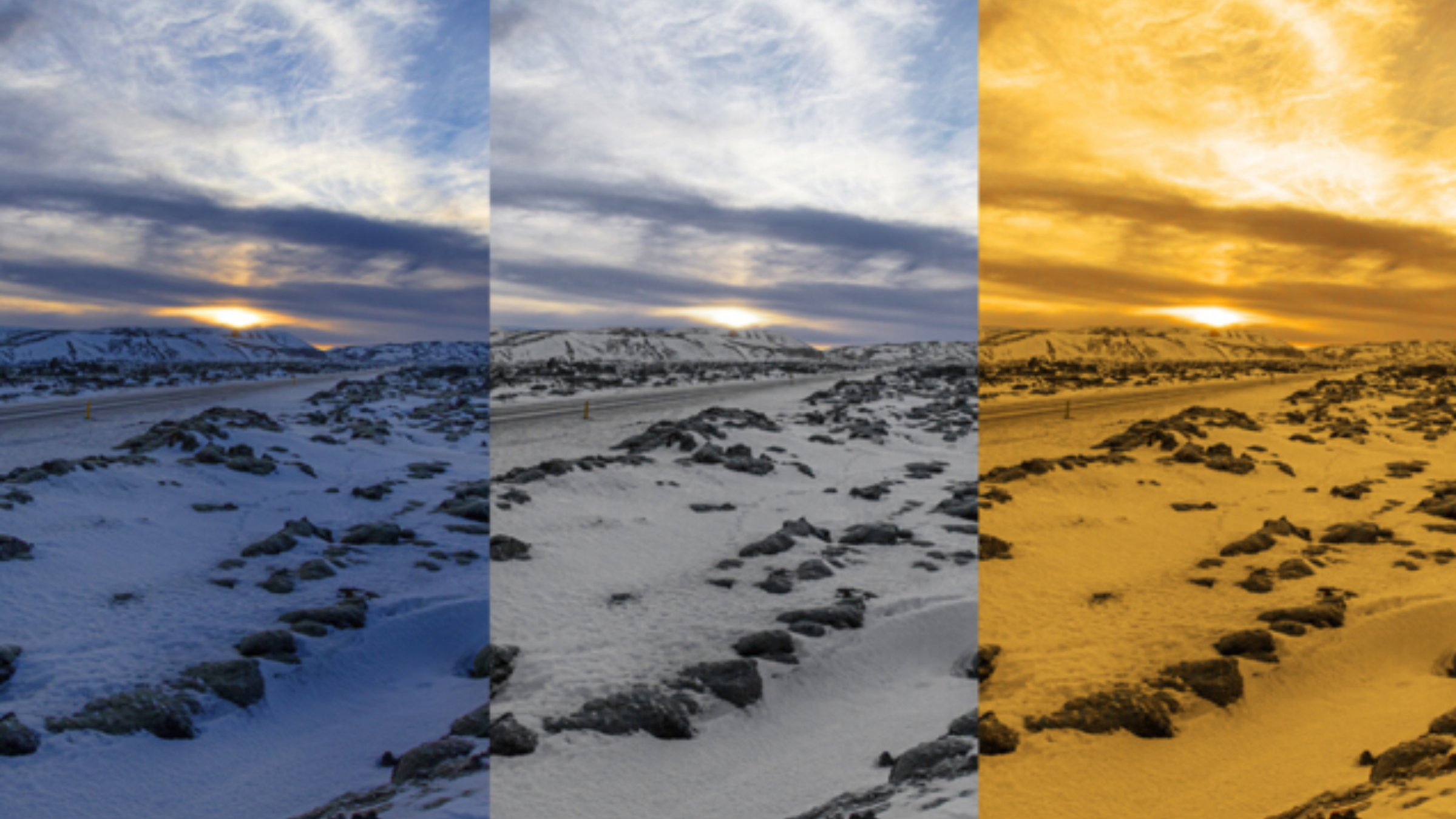Understanding Preset White Balance Settings

 Jul 24, 2025
Jul 24, 2025
 Lighting
Lighting
When you're capturing photos or shooting videos, one of the key elements that can make or break the quality of your work is lighting. White balance plays a crucial role in ensuring your images and videos look natural and accurate. Without proper setting white balance, your visuals can look overly warm, cool, or color-shifted.
Many cameras and smartphones offer preset white balance settings designed to match common lighting conditions. These presets make it easier for photographers and videographers to achieve accurate color reproduction without having to manually adjust the white balance for each scene.
In this blog, we’ll dive into four of the most commonly used preset white balance settings: Daylight, Cloudy, Tungsten, and Fluorescent. Understanding when and how to use each preset can improve the consistency and professionalism of your content.
Daylight White Balance
Daylight white balance is designed to mimic natural light, which typically ranges between 5000K and 6000K on the Kelvin scale. This preset works best when shooting outdoors under clear skies, as it balances the color temperature to produce true-to-life colors.
When to Use:
- Outdoor shoots in sunlight: If you're shooting during the day under clear or slightly cloudy skies, the Daylight preset will ensure that your colors look natural and neutral, eliminating any blue or yellowish color casts.
- Bright, natural lighting: If you’re working in bright sunlight, setting white balance to Daylight will capture the scene’s colors without any distortion.
Example:
If you're shooting an outdoor portrait or capturing nature shots during the day, Daylight white balance is your go-to preset. This will give you the best color reproduction for the environment.
Cloudy White Balance
The Cloudy white balance preset compensates for the cool tones produced by overcast skies. Typically, the light on a cloudy day has a bluish tint due to the diffused sunlight filtering through the clouds. The Cloudy preset adjusts for this by adding warmth to your image, making it more neutral and balanced.
When to Use:
- Overcast conditions: If you're shooting on a cloudy day, setting white balance to Cloudy helps warm up the image and removes the cold, blue tint caused by the lack of direct sunlight.
- Shaded areas: When shooting in shaded locations, where sunlight is partially blocked, the Cloudy preset will ensure that the scene appears more natural.
Example:
If you're filming a landscape or portrait during the late afternoon or on a cloudy day, Cloudy white balance will help you bring out the natural tones of the scene, avoiding the blueish hue that would otherwise be present.
Tungsten White Balance
Tungsten white balance is often used for indoor shots, especially in environments lit by incandescent light bulbs, which emit a warm, yellowish light. This preset cools down the image to correct the overly warm hues created by these light sources, resulting in a more natural appearance.
When to Use:
- Indoors with incandescent lighting: If you’re shooting indoors with tungsten bulbs, setting white balance to Tungsten will balance out the warm tones from the light and provide more accurate colors.
- Candlelight or warm indoor lights: If you're working in dimly lit conditions with warmer lighting, this preset will help prevent your images from appearing too yellow or orange.
Example:
When shooting a video in a living room lit by traditional lamps, the Tungsten preset will ensure your scene doesn't have an exaggerated warm tone, making the colors appear more natural.
Fluorescent White Balance
Fluorescent lighting often has a greenish tint, which can distort the true colors in your photos or videos. The Fluorescent white balance preset compensates for this by adjusting the color temperature to remove the greenish hue, making your images appear more neutral and balanced.
When to Use:
- Shooting under fluorescent lights: Whether you're in an office, a store, or any location using fluorescent lighting, setting white balance to Fluorescent will help remove the unnatural color cast and make your visuals appear more accurate.
- Artificial lighting with a green tint: If the lighting has a greenish or cool tone (as with many fluorescent bulbs), using this preset will correct those color issues.
Example:
If you're recording a video in a conference room under fluorescent lighting, Fluorescent white balance will ensure that your colors are corrected, preventing your video from having an unnatural, greenish tint.
How to Use Preset White Balance Settings
Now that we've gone through the most common preset white balance settings, let's talk about how to apply them effectively.
- Check the lighting conditions: Before adjusting your white balance, take note of the lighting around you. Are you outdoors in sunlight, indoors under tungsten lights, or in a shaded area? This will help you decide which preset is best for the situation.
- Select the appropriate preset: Most cameras offer these preset white balance settings as simple options you can switch between. Choose Daylight for outdoor shots, Cloudy for overcast days, Tungsten for indoor lighting with incandescent bulbs, and Fluorescent for artificial lights with a greenish cast.
- Fine-tune if necessary: While presets work in most situations, you may need to fine-tune the white balance in certain lighting environments. Many cameras allow you to adjust the white balance manually or use a custom white balance option to get the most accurate results.
Final Thoughts
Setting white balance correctly is essential for achieving natural-looking images and videos. Using the right preset white balance settings ensures that your colors are true to life, no matter the lighting conditions. Whether you're shooting in daylight, on a cloudy day, under tungsten lights, or in fluorescent-lit spaces, understanding when to apply each preset will significantly enhance the quality of your content.
By mastering these preset white balance settings, you can take your photography and videography to the next level, ensuring that your visuals consistently look polished and professional.
